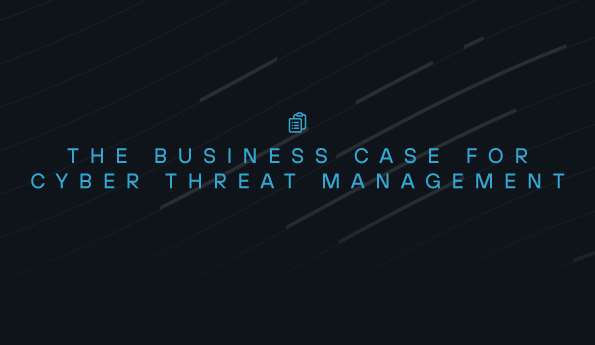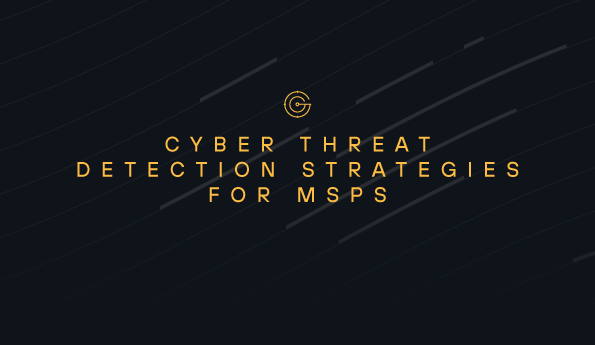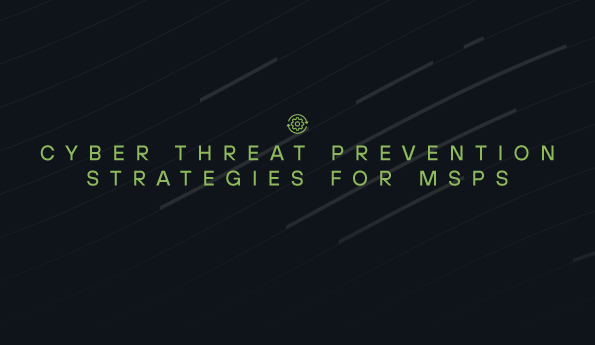MSP Security KPIs That Matter: Beyond Vanity Metrics to Business Outcomes
This is Part 5 of our 6-Part series detailing our State of MSP Security Maturity Report 2025 and the strategies MSPs can use to break through the plateau.
"We blocked 47,000 threats this month."
"Our SIEM processed 2.3 million events."
"We resolved 847 security alerts with 99.2% uptime."
Sound familiar? These are the vanity metrics that fill monthly reports and make clients feel secure. They're impressive numbers that show how busy your security tools are.
But here's the uncomfortable truth: these metrics don't measure security effectiveness, and clients are starting to notice.
The metrics that matter aren't about how busy your security tools are—they're about how much safer your clients become over time. And MSPs who master this distinction are commanding premium pricing, attracting higher-quality clients, and building strategic relationships that transform their businesses.
The Vanity Metrics Trap
The cybersecurity industry has trained businesses to think that more activity equals better security. Vendors promote solutions based on detection rates, processing volume, and alert generation. MSPs dutifully report these numbers as proof of value.
But these metrics create a dangerous illusion of progress while missing what actually matters to business leaders.
Why Volume Metrics Mislead
High alert volumes often indicate poor operations, not effective threat detection. Well-tuned security programs generate fewer false positives while maintaining high accuracy for genuine threats.
Blocked threat counts don't measure risk reduction. A firewall that blocks 50,000 automated port scans provides less business value than identity monitoring that prevents a single credential compromise.
Processing metrics ignore business impact. Clients don't care how many events your SIEM processed—they care whether their business operations remained secure and uninterrupted.
Think about it from your client's perspective. They're not paying you to be busy—they're paying you to reduce their risk and protect their business.
The Client Communication Transformation
Here's the difference between vanity metrics and business outcomes in action:
Traditional MSP Report
"This month we processed 1.2 million security events, blocked 15,000 threats, and maintained 99.8% system uptime. Our security operations center responded to 47 incidents with an average resolution time of 2.3 hours."
Client reaction: "Okay, seems like you're busy. Are we secure?"
Outcome-Focused MSP Report
"This quarter we reduced your overall security risk by 23% through proactive vulnerability management and access control improvements. We prevented two potential data breaches through enhanced identity monitoring, saving an estimated $340,000 in incident response costs and regulatory penalties. Your environment now meets 130 of the 153 CIS safeguards, supporting your planned expansion without additional compliance risks."
Client reaction: "This is exactly the strategic partnership we need. How do we expand this approach to other areas?"
The difference isn't just communication style—it represents fundamentally different security capabilities and value delivery.
The Strategic KPI Framework
More mature MSPs focus on metrics that demonstrate measurable business value:
Risk Reduction Indicators
- Security posture improvement trends showing measurable risk reduction over time
- Vulnerability exposure reduction across client environments through proactive management
- Compliance gap closure rates for regulatory requirements
- Incident impact minimization when threats do occur
Operational Excellence Measures
- Mean Time to Detection (MTTD) for genuine security incidents, not false positives
- Mean Time to Response (MTTR) for threat containment and remediation
- False positive reduction rates to improve operational efficiency
- Client environment hardening progress through proactive improvements
Business Enablement Metrics
- Security-enabled business initiatives supported without compromise
- Compliance certification achievement for client growth opportunities
- Incident-free operational periods supporting business continuity
- Proactive prevention versus reactive response ratios
These metrics tell a story of continuous security improvement rather than just defensive activity.
The Premium Pricing Justification
Outcome-based metrics transform your value proposition from cost justification to business enablement.
Traditional Security Sales Challenge
MSP: "You need better security because threats are increasing."
Prospect: "What will this cost us, and how do we know it's worth it?"
MSP: "We'll monitor your systems and respond to incidents quickly."
Prospect: "Okay, but what if nothing happens? Are we just paying for insurance?"
This conversation focuses on cost and creates price pressure.
Outcome-Focused Sales Advantage
MSP: "We help businesses like yours reduce security risk by 25-35% while enabling growth initiatives that require strong security posture."
Prospect: "How do you measure that, and what does it mean for our business?"
MSP: "We establish security baselines, track posture improvements quarterly, and provide industry benchmarking that shows your competitive advantage."
Prospect: "This sounds like exactly the strategic approach we need."
This conversation focuses on business value and justifies premium pricing.
The Measurement Infrastructure Challenge
Outcome-based metrics require more sophisticated measurement than traditional activity reporting. Your current tools are probably optimized for volume metrics rather than business impact analysis.
What You Need to Measure Outcomes
Integrated data collection from multiple security tools, business systems, and risk assessment frameworks that combine:
- Security tool data for technical performance
- Risk assessment results for posture improvement tracking
- Business impact analysis for cost avoidance and value creation
- Compliance status tracking for regulatory management
- Client satisfaction indicators for relationship quality
The Benchmarking Requirement
Meaningful outcome metrics require baseline establishment and comparative benchmarking. How do you measure improvement without knowing the starting point? How do you demonstrate industry-leading performance without comparative data?
Successful MSPs invest in comprehensive security posture assessments that establish measurable baselines for tracking improvement over time.
The Client Retention Impact
Outcome-focused MSPs experience dramatically lower client churn because they deliver measurable business value rather than just technical services. Clients view these MSPs as strategic partners rather than commodity providers.
Clients who see measurable security outcomes consistently expand their engagements to additional services and locations. The trust built through outcome delivery creates opportunities for broader IT and business consulting that were previously outside scope.
Your Implementation Roadmap
Transitioning from activity metrics to outcome-based measurement requires systematic change in tools, processes, and client communication.
Phase 1: Measurement Infrastructure (Month 1-2)
Baseline Assessment Implementation:
- Deploy security posture assessment tools and processes
- Establish risk measurement frameworks for different client types
- Create industry benchmarking capabilities
- Develop integrated reporting dashboards
Staff Training:
- Train technical staff on business impact analysis
- Develop sales team capabilities for outcome-focused conversations
- Create client communication templates for outcome reporting
- Establish measurement accuracy processes
Phase 2: Client Communication Transformation (Month 2-3)
Existing Client Transition:
- Introduce outcome-based reporting alongside traditional metrics
- Educate clients on business value measurement approaches
- Establish improvement goals and success criteria
- Demonstrate early wins through baseline comparisons
New Client Acquisition:
- Develop outcome-focused sales materials and proposals
- Train sales team on value-based conversations
- Create competitive differentiation messaging around outcome delivery
- Establish success story documentation for references
Phase 3: Advanced Capability Development (Month 3+)
Strategic Advisory Evolution:
- Develop industry-specific outcome frameworks
- Create proactive improvement recommendation processes
- Establish quarterly business reviews focused on security value
- Build expansion opportunity identification based on outcome success
The Proposal Differentiation Framework
Traditional MSP security proposals focus on:
- Tool and service descriptions with technical specifications
- Pricing breakdowns by security function
- Activity volume commitments for monitoring and response
- Service level agreements for technical performance
Outcome-focused MSP proposals emphasize:
- Business outcome commitments with measurable success criteria
- Risk reduction goals with quarterly tracking and reporting
- Industry benchmarking showing competitive security positioning
- Value creation opportunities through security-enabled business initiatives
- Success story references with quantified business impact
The difference in client response is dramatic. Outcome-focused proposals typically close at higher rates with greater annual contract value.
The Competitive Advantage Reality
MSPs using outcome-based metrics gain significant advantages in client acquisition, retention, and expansion:
Revenue and Margin Transformation:
- Higher contract values through value-based pricing
- Improved profit margins through premium pricing for measurable outcomes
- Increased client lifetime value through strategic partnerships
- Reduced sales cycles through clear value demonstration
Client Relationship Evolution:
- Strategic advisory positioning rather than vendor-customer transactions
- Expanded service opportunities through demonstrated value delivery
- Reduced client churn through measurable business impact
- Increased referral generation from satisfied strategic partners
The Measurement Revolution Impact
The opportunity to transform your MSP through outcome-based metrics has never been clearer. The question isn't whether outcome metrics provide competitive advantage—the question is whether you'll implement the measurement infrastructure that separates strategic partners from commodity providers.
MSPs who make this transition are building more valuable, sustainable businesses while delivering superior client outcomes. They're competing on value rather than price, attracting higher-quality clients, and building strategic relationships that drive sustainable growth.
The choice is clear: continue reporting activity metrics and compete on price, or implement outcome measurement and compete on value.
Want to learn more? Watch our On Demand webinar on Breaking Through the Security Maturity Plateau for first hand insights.
See Todyl in Action
Learn how you can protect what you built.
Stay on the Cutting Edge of Security
Subscribe to our newsletter to get our latest insights.



